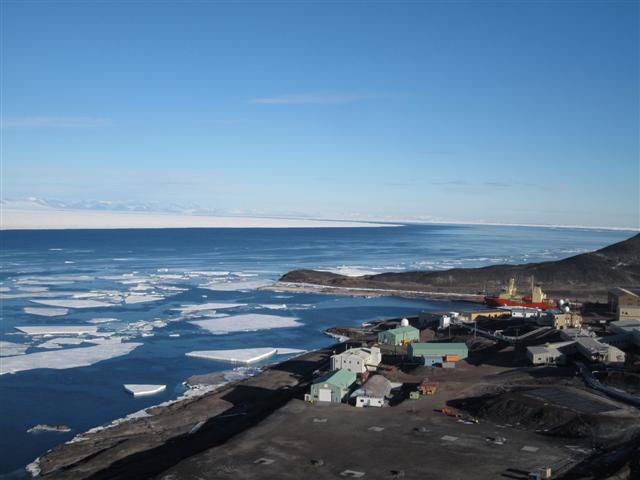|
Home sweet homeHousing infrastructure, policy at McMurdo to get makeoverPosted September 21, 2012
The National Science Foundation (NSF) These initiatives, which had long been in the planning stages, were delayed by the prolonged contract transition of the Antarctic Support Contract (ASC). With the ASC contract transition complete, the project and policy changes can now be managed from start to finish by a single entity. Planned upgrades include both quality-of-life initiatives for residents, as well as infrastructure to improve energy efficiency and reduce long-term maintenance. Upgrades to the dorms, which house up to about 1,100 people during the austral summer, will start during the 2012-13 season with improvements to Building 155, the 68,000-square-foot hub of McMurdo Station. In addition to 60 dorm rooms, the building contains the station’s kitchen and dining hall, radio station, retail store, barbershop and offices. It was built in 1969. Over the 2013 winter, rooms in dorm 210 will be converted to single rooms to house New York Air National Guard 
Photo Credit: Peter Rejcek/Antarctic Photo Library
Wind turbines have helped increase McMurdo Station's energy efficiency. Planned renovations to the dorms, forefront, are also intended to improve station operations.
Under the new housing plan, room assignments will be based on the amount of time a deploying person is expected to spend at McMurdo, while specific buildings will be allocated based on the agency or company the person works for while on station. There will no longer be a point system based on “Ice time.” In the case of support personnel with ASC, along with employees of PHI, Inc. and Kenn Borek Air (KBA)
These categories are intended to help ASC better allocate bed space — the idea being that dorms 206 to 209 will house permanent residents, which will require less management once those buildings fill up during the early part of the season. The other buildings will house transient and temporary residents. All NSF grantees will be housed in buildings 203A, 203B and 203C, regardless of their time scheduled on station, including principal investigators. Each room will contain accommodations for a third roommate when necessary. These dorms, built in 1980 with 77 rooms total, will have wired Internet access for researchers to use. Military personnel under Support Forces Antarctica (SFA) Summer season residents may still choose a specific roommate, and those requests will be handled on a case-by-base basis. 
Photo Credit: Jeff Scanniello/Antarctic Photo Library
McMurdo Station with open water in McMurdo Sound in February 2011.
Residency criteria will not apply during the winter season. However, winter participants should plan and expect to have roommates at the start of winter fly-in (Winfly) or when arriving on station prior to the conclusion of the summer season. “NSF will be taking a much more active role in management of McMurdo housing and focusing on the need to make long-term changes over the next five years, including creating more single rooms, which will require a renovation plan and thus relocation during renovation,” said Brian Stone, division director of Antarctic Infrastructure and Logistics “The net result, NSF believes, will be an improvement in accommodations for all personnel,” he added. The planned renovations are taking place at the same time as the recent release of a report by a high-level external panel that assessed logistics and infrastructure throughout the U.S. Antarctic Program (USAP). The Blue Ribbon Panel The panel’s report, More and Better Science in Antarctica through Increased Logistical Effectiveness The panel specifically identified inefficiencies in the existing McMurdo housing arrangements that could be addressed through policy changes. They pointed out that some dorms were overcrowded while others were under-used. Their report also called for NSF to consider grouping people whose jobs and hours were similar together and to consider establishing a “science dorm.” At the direction of NSF Director Subra Suresh |



For USAP Participants |
For The Public |
For Researchers and EducatorsContact UsU.S. National Science FoundationOffice of Polar Programs Geosciences Directorate 2415 Eisenhower Avenue, Suite W7100 Alexandria, VA 22314 Sign up for the NSF Office of Polar Programs newsletter and events. Feedback Form |


